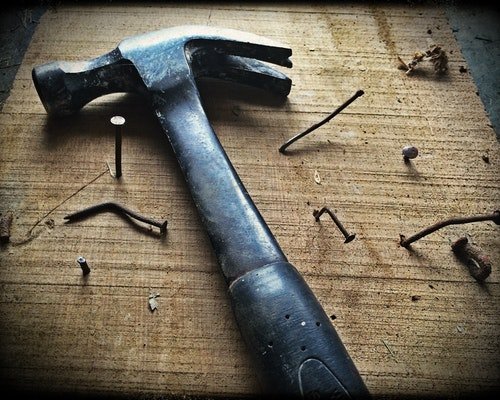Have you noticed all the small “save it for later” projects piling up around the house?
Most household issues are more of a headache than an emergency. Good news! We have simple solutions to help you fix them in the same time it takes to brew your morning coffee.
The Problems and Solutions:
1. Peeling wallpaper:
If your wallpaper seam is coming up, paste it down with adhesive, go over once with a damp rag, and cover with painter’s tape. After 24 hours remove the tape.
2. Stuck Window or Door:
A buildup of gunk is the main cause for windows and doors that don’t move smoothly, put dry PTFE spray lubricant on the contact points and wiping it off with a rag. Don’t use oil lubricants; they can attract dirt, and some can damage the vinyl.
3. Lingering Odors:
Have you noticed a musky smell in your basement or garage? All you need is a big bag of plain charcoal (not the self-lighting kind). Cut a square out, and leave it in the corner somewhere and let it absorb the odors. Replace every 6 months.
4. Rattling Door:
A regularly rattling door is annoying. Thankfully, the solution is easy. Take a medium Philips and slot head screwdrivers, two pairs of pliers and a washcloth. Use a screwdriver to remove the doorknob’s strike plate (the metal square on the jam that reinforces the bolt hole). See the tang, or the lip that curls into the hole? Wrap the strike plate in the cloth and use the pliers to bend the tang a half-centimeter toward the hole’s center. Repeat and bend further until the rattling stops.
5. Pesky Wood Scratches:
If you see some scratches in wood you can color it out with a crayon or a scratch repair pen from any hardware store.
6. Wobbly Showerhead:
Eliminate a wobbly showerhead or pipe with a few squirts of expanding foam.
7. Ceiling Holes:
Save yourself time by covering any ceiling holes with a smoke detector.
8. Water Stains:
Tackle water stains with a bleach and water solution (10 percent bleach), but first cover the walls and floors with plastic and be sure to use protective goggles. If it’s an old stain, use a mold and mildew remover from the grocery store. This will work on both flat and textured ceilings.
9. Bad Faucet:
When a faucet loses pressure or starts spraying to the side it’s usually the result of a dirty aerator screen. Close the drain plug and then remove the aerator using a rag or masking tape. To remove the sand and other deposits, soak the aerator in vinegar, then scrub it with a toothbrush.
10. Kinked Toilet Chains:
Kinked toilet chains lead to running toilets; solve the problem by removing the chain from the arm and sliding a plastic straw over the flapper chain.
More than likely you’ve found yourself with a handful of these problems in your own home. Taking a few minutes each day to tackle one of these issues could help make each day go more smoothly.
Do you have any quick fix tips you swear by? Let us know!
Want to know what’s going on in your home?
Schedule an inspection with us today and we’ll be at your home in 48 hours or less, ready to give you a thorough and professional report.



